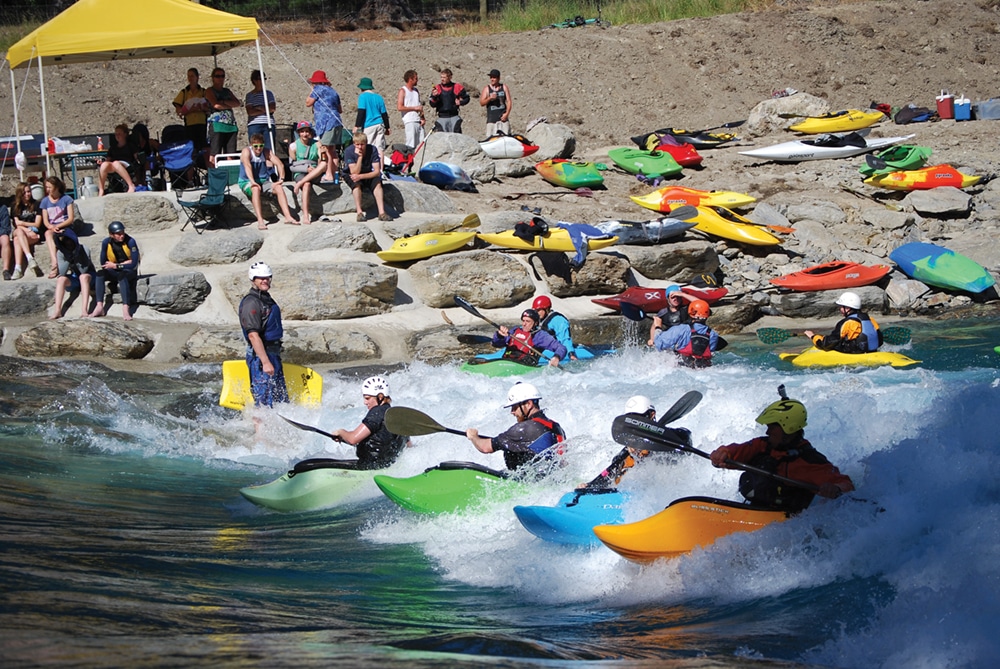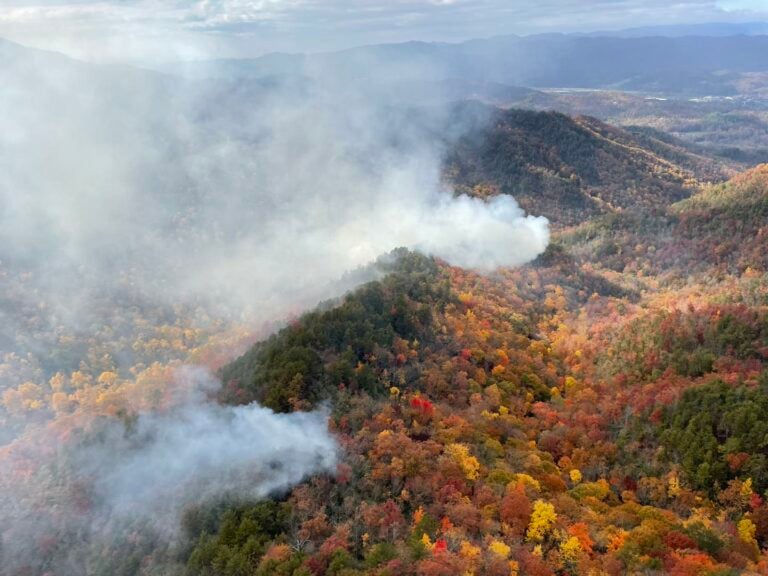Scott Shipley, a veteran kayaker of three Olympic games and the founder and president of S2O Design and Engineering, has been getting calls from Asheville for almost as long as he’s been building whitewater features. None of those calls ever resulted in a whitewater park, but that appears likely to change.
In 2016, the nearby town of Woodfin was mobilizing to create a system of greenways that would revitalize its French Broad riverfront. Located on the northern border of Asheville, this system would tie into the city’s own plan for greenway improvements—plans that had been proposed years earlier but were just starting to gain momentum.
Marc Hunt, former Asheville City Councilman and former chairman of the city’s Greenway Commission, reached out to Shipley to look into the viability of a whitewater feature on the French Broad. A lifelong paddler himself, he felt that a surfable whitewater wave could serve as a centerpiece of the transformation and add a “Blueway” component to the Greenway effort. As the two kayakers floated the river scouting for a viable location, Shipley’s eyes lit up when they came around a bend. It appeared they had found the perfect spot.
Only they hadn’t. After falling in love with the location and the amenities it offered next to the existing Riverside Park, Shipley’s 2016 Conceptual Design and Feasibility Study showed that you could create a whitewater feature there, but not one that would make it through the permitting process. He explains, “In the U.S., one of the requirements that we have for placing a feature in a natural river is that we can’t raise the flood level. You’d hate to live in a house by the river and find out your basement flooded because of a play park downstream. That’s why we’re held to the same construction standards as a dam or a bridge.”
It was a setback, but the 2016 study included several alternatives. Besides more complex and expensive construction methods, it identified another feasible location for a world-class feature approximately 350 feet upstream of the original. In 2020, the town purchased the adjacent riverfront property from WastePro, and last April, leaders including town manager Eric Hardy signed a $719,000 contract for the detailed design of the wave and the park improvements that would accompany it on shore. That figure is just a part of the project’s approximately $6 million price tag, but it’s a big slice that demonstrates the ongoing commitment to the plan.
And what does a $6 million investment get you? According to Shipley’s 2017 Hydraulic Analysis, “The wave would create a place to surf, kayak, and float that would attract users from throughout the region and country. Similar features, located in similar places, have been found to be significant attractions that have multimillion-dollar economic impacts, host major kayaking events and festivals, attract visitors from afar, and draw and encourage the local community to pursue outdoor recreation.”
Shipley’s firm has already designed a similar white water park feature in the Camphill Surf Park on the Hawea River in Wanaka, New Zealand. Camphill was designed to produce surfable features in flows that vary from 300 to 7,000 cubic feet per second (cfs). That range applied to the French Broad will create year-round opportunities for kayakers, paddle boarders, river surfers, and many other users.
It’s an exciting proposition, particularly in an area known for its outdoor amenities. Shane Benedict is the Head of Design at Big Adventures, a paddlesports manufacturer in Fletcher, N.C., and one of the original founding partners of whitewater brand Liquidlogic Kayaks. “As a boater and as someone that runs a local paddlesports business, I’m really excited about the Wave’s potential to expose people to the fun you can have on the water.” Benedict has long been a pioneer in the local paddling scene, and he explains that, “There are tons of great rivers for freestyle kayaking in the greater Asheville area, but distance and river level dependencies make them difficult to rely on. It will be awesome to jump in the river at the wave park for an after-work or after-school session, and that accessibility will help grow the sport.”
Chris Gragtmans, another local kayaking expert and real estate professional, is excited about the project’s potential to unite citizens and transform a part of the river that has long been neglected. “The beautiful thing about greenways and blueways is that they are a non-partisan subject, and everyone can see and feel their benefits. Deliberate participation from public and private stakeholders is required to breathe new life into a neglected and environmentally contaminated real estate corridor like the French Broad River, and that’s exactly what is occurring.”
It’s difficult to pinpoint a completion date, and Shipley describes permitting as a big unknown that involves lots of regulatory hurdles. His best guess is a design phase that takes about a year, including construction of a 1/13th scale model at a lab in Prague. The modeling step adds to the overall cost, but it also ensures the feature lives up to its potential. Construction, which cannot start until the river is at its lower point, will take another year.
Shipley has built dozens of features around the world and knows the result will be worth the wait. “There’s that moment when a park has just opened, and a family pulls up in a van and a bunch of kids jump out. Some of them float, some play on the feature, some just sit on the bank and read, but it’s awesome to create this thing that wasn’t there before and get to see people utilize it.”
Cover photo: Features at a new whitewater park in Woodfin, N.C., will resemble those at the Camphill Surf Park on the Hawea River in Wanaka, New Zealand (pictured here). Photo courtesy of S2O Design








